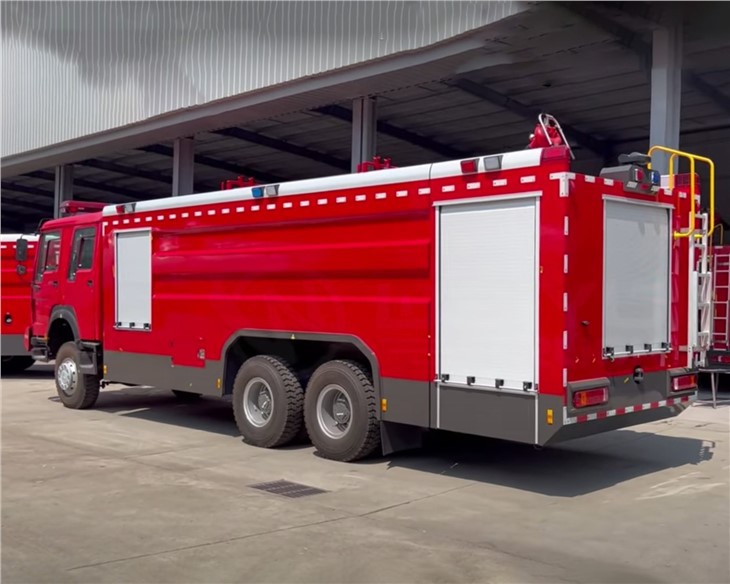Introduction
The 2005 International 4300 is a versatile and robust medium-duty truck that has gained a notable reputation in various industries. Its powerful performance, reliability, and range of configurations make it an exceptional choice for businesses in need of a durable workhorse. In this article, we will dive deep into the specifications, capabilities, advantages, and potential drawbacks of the 2005 International 4300. We will also cover practical applications, tips for maintenance, and frequently asked questions to provide a well-rounded understanding of this vehicle.
Specifications of the 2005 International 4300
The 2005 International 4300 is known for its solid build and impressive specifications. Let’s break down the essential features that set this truck apart:
Engine Options
| Engine Type | Cylinders | Horsepower | Torque |
|---|---|---|---|
| MaxxForce DT | 6 | 240-300 | 560-800 lb-ft |
| International 7.6L | 6 | 230-300 | 520-860 lb-ft |
Transmission Options
- Manual Transmission: 6-speed
- Automatic Transmission: Allison 1000 and 2000
Chassis and Dimensions
The design of the International 4300 ensures it can handle various loads and applications. Here are some key dimensions:
- Wheelbase: Ranges from 192 to 254 inches
- Length: Approximately 23 to 30 feet
- Width: Approximately 96 inches
- Height: About 108 inches
Weight Ratings
Understanding the weight ratings of the 2005 International 4300 is vital for compliance and performance:
- GVWR: 25,500 to 33,000 lbs
- Payload Capacity: Up to 15,000 lbs
Features and Benefits
The 2005 International 4300 is equipped with various features that enhance its functionality and user experience. Let’s explore these benefits:
Durability
Constructed with high-strength materials, the International 4300 is built to withstand rigorous use. This durability reduces downtime and maintenance costs, making it suitable for heavy-duty tasks.
Comfort and Ergonomics
The cab design prioritizes comfort for the driver, featuring adjustable seats, climate control, and user-friendly controls, making long-haul journeys more manageable.
Versatile Configurations
This truck can be customized for various applications such as box trucks, tow trucks, or dump trucks. The flexibility in configuration allows businesses to tailor the 4300 to their specific needs.
Fuel Efficiency
With advancements in engine technology, the 2005 International 4300 offers competitive fuel efficiency, which is crucial for reducing operational costs.
Common Applications
The diverse capabilities of the International 4300 enable it to be used in various sectors. Here are some common applications:
Delivery Services
Thanks to its load capacity and customizable configurations, the 4300 is an excellent choice for logistics and delivery operations.
Construction
The truck’s robust design and ability to carry heavy loads make it ideal for construction sites, transporting materials and equipment.
Towing
When outfitted with the appropriate towing package, the International 4300 can effectively handle towing tasks for recreational and commercial use.
Maintenance Tips
Proper maintenance can extend the lifespan of your 2005 International 4300 and ensure optimal performance. Here are some practical tips:
Regular Inspections
Schedule routine inspections for the engine, brakes, tires, and lights. Early detection of issues can prevent costly repairs.
Fluid Checks
Regularly check and change engine oil, transmission fluid, coolant, and brake fluid as per the manufacturer’s recommendation to ensure smooth operations.
Tire Maintenance
Monitor tire pressure and tread depth to maintain better traction and fuel efficiency. Rotate tires every 5,000 to 8,000 miles.
Brake System Care
Inspect the braking system regularly. Replace brake pads and discs as needed to maintain safety and performance.
Comparison with Other Medium-Duty Trucks
To better understand the 2005 International 4300’s place in the market, let’s compare it with other leading medium-duty trucks.
Freightliner M2
- Engine Options: More modern and fuel-efficient engines.
- Comfort: Similar comfort features but often at a slightly higher price point.
Kenworth T270
- Build Quality: Known for superior build quality and greater reliability.
- Payload: Slightly lower payload capacity.
Peterbilt 335
- Luxury Features: Offers more luxury features but at a premium price.
- Fuel Efficiency: Generally provides better fuel economy.
Buying a 2005 International 4300: What to Look For
If you are considering investing in a used 2005 International 4300, keep the following factors in mind:
Service History
A comprehensive service history can provide insights into how well the vehicle has been maintained.
Condition of the Chassis and Body
Inspect for rust, dents, or mechanical issues that could affect the truck’s performance.
Mileage
Be mindful of the mileage; lower mileage can indicate less wear, but a well-maintained higher-mileage truck can be a valuable purchase.
Modifications
Assess any aftermarket modifications that may have been made, as they can impact the vehicle’s reliability and performance.
Frequently Asked Questions (FAQs)
1. What is the average fuel economy of the 2005 International 4300?
The average fuel economy ranges from 8 to 12 miles per gallon, depending on the engine type and load conditions.
2. Is the 2005 International 4300 suitable for long-distance hauling?
Yes, the 2005 International 4300 is well-suited for long-distance hauling due to its comfort features and fuel efficiency.
3. What are common problems associated with the 2005 International 4300?
Some common issues may include electrical system failures and transmission problems, primarily if regular maintenance is overlooked.
4. How much does a 2005 International 4300 typically cost?
The price can range from $20,000 to $40,000, depending on the condition, mileage, and configuration.
5. Can I use the 2005 International 4300 for towing?
Yes, when equipped with the right packages, the International 4300 can efficiently handle towing tasks.
6. What type of drivetrain does the 2005 International 4300 use?
The 2005 International 4300 is available with both rear-wheel drive and optional all-wheel drive configurations, depending on the model.





